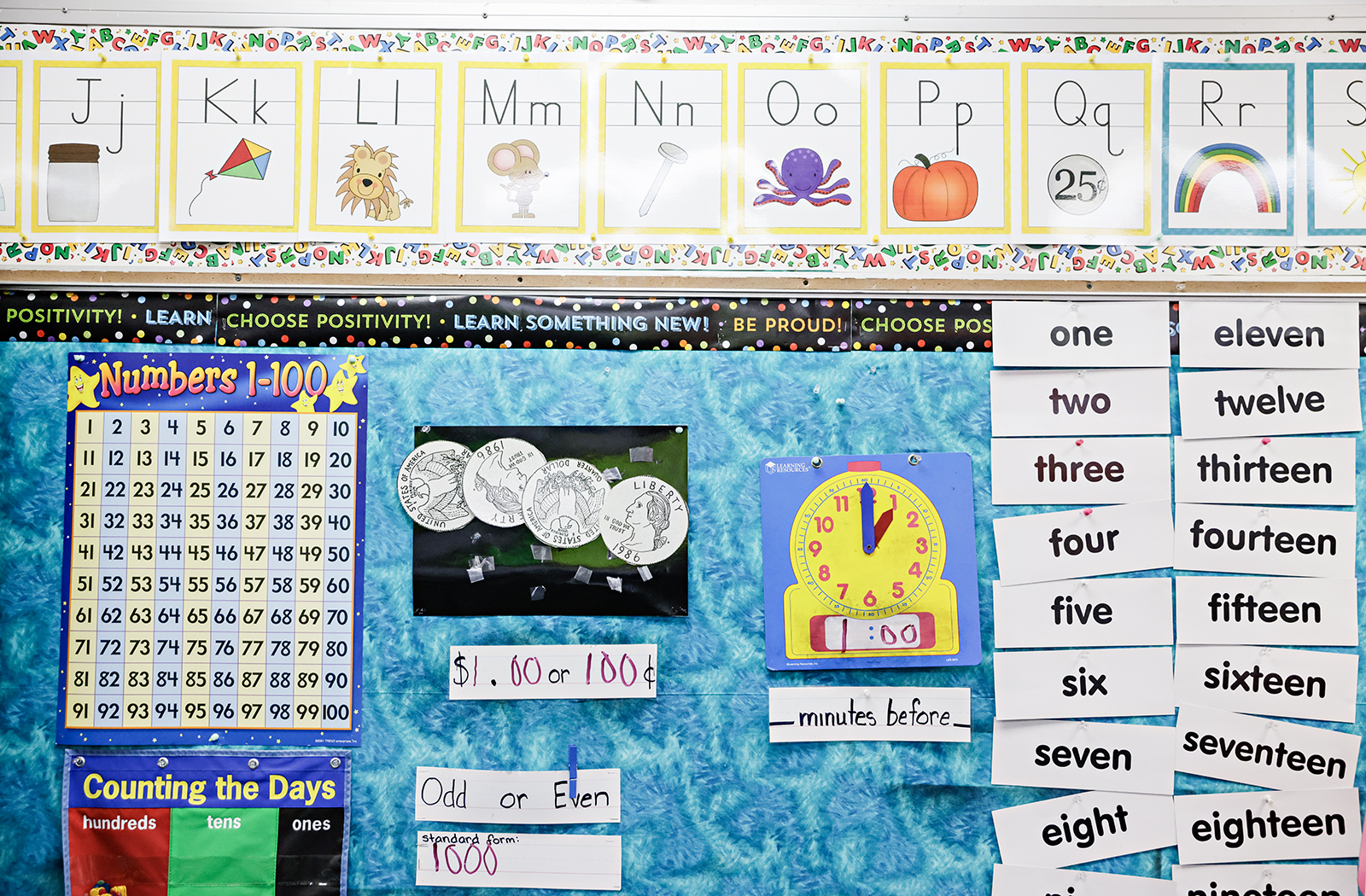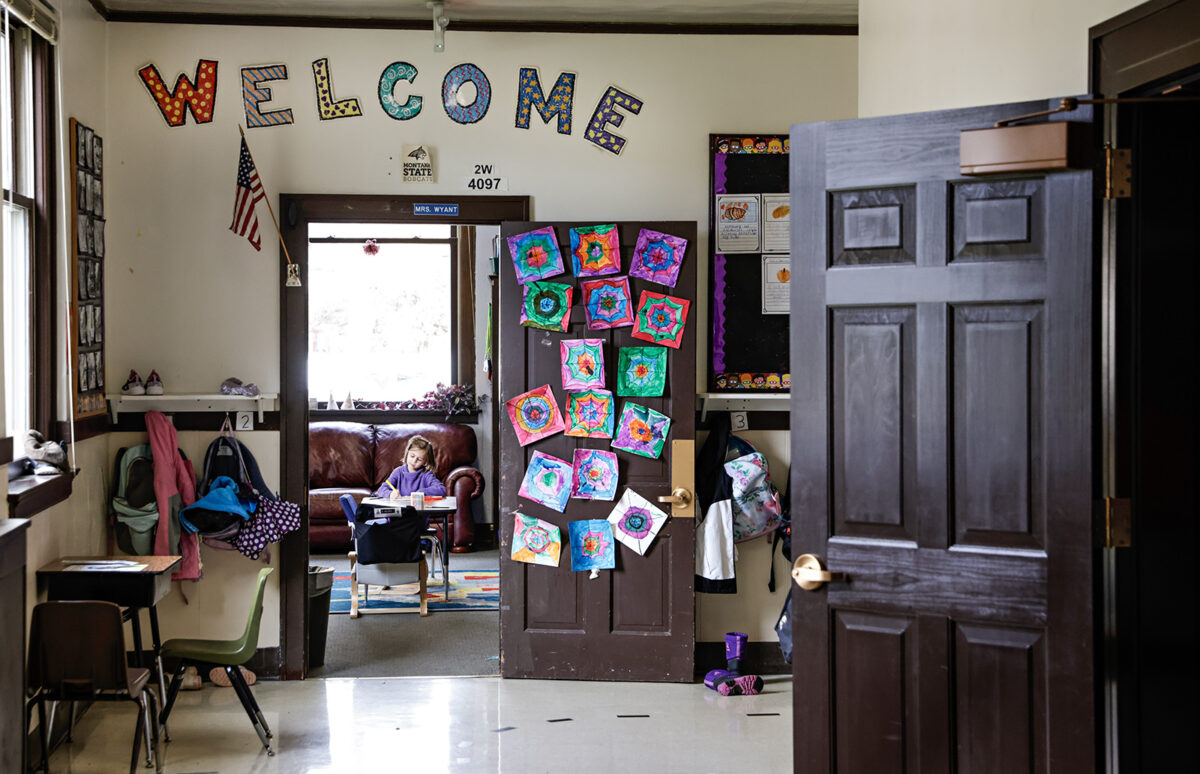Flathead Valley Schools Face ‘Dismal’ Budget Projections
As school districts confront the convergence of inflation, sunsetting federal funding and a pattern of failed school levies, program cuts and layoffs are on the horizon
By Denali Sagner
Public schools across the Flathead Valley are facing unprecedented budget crises as the lapse of pandemic-era federal aid, inflation and an unwillingness by local taxpayers to pass school levies converge, leaving districts unable to pay for critical staff and programs.
From Kalispell to Somers, school administrators are struggling to piece together budgets for the 2024-25 school year as administrative costs continue to rise and budget deficits ranging from hundreds of thousands to millions of dollars loom. Facing program and staffing cuts, educators and school board trustees have criticized Montana’s lawmakers, who declined to increase educational funding to keep up with inflation, and have implored their communities to help fill the gap through local levies.
As budget negotiations persist, the Beacon examined how Montana’s schools are funded and why our local education system is facing such bleak financial projections.
How are schools in Montana funded?
Schools in Montana operate through a combination of local, state and federal funding. Montana school districts each year receive a basic entitlement from the state, which is a flat amount doled out to each district, as well as a per-student entitlement.
On top of the basic entitlement and per-student funding, districts receive additional state funds for each certified teacher they employ, each at-risk student and each Indigenous student they teach, as well as small per-student entitlements that go towards the constitutionally mandated Indian Education for All program and participation in a statewide data system.
Montana’s education laws set strict parameters for how much, and how little, school districts are able to spend each year. Each district must spend a certain amount of its budget each year, which Montana law calls a BASE, or a “Base Amount for School Equity.” To limit tax spikes on property owners, the Legislature also sets a maximum amount that districts are permitted to spend.
While the BASE budget — which is around 80% of the district’s maximum budget — comes primarily through state funding, districts are often required to turn to local taxpayers to make up the 20% difference and achieve full funding. This additional funding comes largely in the form of school levies — either general or for specific purposes — which taxpayers approve, or deny, through local elections.
On top of state and local funding, schools are able to leverage federal funds to bolster budgets. Montana schools in 2023 received $424.9 million in federal education funding, or $2,830 per student. Federal funding comes in a few particular forms, including Title I grants used to help low-income students, grants under the Individuals with Disabilities Education Act, the federal Rural Education Achievement Program and support for school meals through the U.S. Department of Agriculture. During the pandemic, Montana schools received over $600 million in Elementary and Secondary School Emergency Relief (ESSER) funding, a pandemic relief program designed to aid public schools through the COVID-19 crisis.
Montana ranks 29th in the nation in how much it spends on its public school students, spending $14,980 per pupil. Neighboring states Wyoming, North Dakota and Idaho spend $19,887, $17,921 and $8,748 per pupil, respectively.
Where did this budget crisis come from?
The budget crisis converging on the Flathead Valley’s schools is the result of the lapse in federal pandemic funding, a failure by local taxpayers to support school levies and bonds, and the rate of inflation far outpacing school funding formulas.
Funding awarded through the federal ESSER program helped prop up school districts across the Flathead Valley as they navigated the COVID-19 pandemic. Many districts used the money to help pay for staff and programs that schools had long struggled to fund, from nurses and mental health counselors to new teachers and curriculum programs.

$16 million in ESSER funds went to the Kalispell Public Schools, $8 million to Columbia Falls, $3.2 million to Whitefish, $2.3 million to Bigfork, $1.7 to Somers-Lakeside and $1 million to West Valley, among other districts.
Schools also used ESSER funds to cover costs that would have normally been under their general fund budgets, helping to free up money for critical personnel and program costs.
Joe Price, superintendent of the Somers-Lakeside School District, said that over the past three years, the district was able to pay for a handful of staff through federal dollars, helping to relieve pressure on the general fund.
However, the final phase of the federal funding expires this September, leaving many districts scrambling to cut programs and staff that had been funded through ESSER.
In addition to the lapse in funding, administrators say the Legislature’s funding formula for schools has failed to keep up with inflation.
The Montana Legislature every two years sets the per-student funding amount awarded to public schools, which increases at a 3% rate to account for inflation. The Legislature this past session authorized a 2.7% funding increase for 2024 and a 3% increase for 2025.
Educators, however, criticized the Legislature for maintaining its typical funding increases while inflation pushed up the cost of everything from pencils to healthcare to school bus fuel.
“It just costs us more to do business,” Cory Dziowgo, superintendent of the Columbia Falls School District, said.
Since April of 2021, utility gas prices have risen 26%; electricity, 21%; vehicle maintenance and repair, 19%; and groceries, 20%, per the U.S. consumer price index.
Price said that the Legislature’s insistence that a 3% funding increase would cover the impact of inflation on public schools is “simply not true.”
Beyond the expiration of ESSER dollars and persistent inflation, the Flathead Valley’s schools can no longer rely on voters to approve bonds and levies that help fill the gap between BASE and maximum funding.
Economic pressures, high property taxes and a souring culture around public education have made it more difficult for local schools to pass levies and bonds in recent years. Voters in Marion, Whitefish, Kalispell, Bigfork, Deer Park and West Valley have rejected school levies and bonds over the last two decades despite concerns about infrastructure and staffing needs.
After property values spiked across the state last year, leading to a 21% increase in property taxes for the average Montana homeowner, the likelihood of passing school levies seems even slimmer.
“People just don’t like paying taxes, and unfortunately they don’t see what kind of product they’re getting for that,” Kalispell Public Schools trustee Jack Fallon said during a recent discussion about the district’s budget woes.

What will this mean for local schools?
According to Columbia Falls School District Clerk Dustin Zuffelato, the district’s budget projections are “dismal.”
The Columbia Falls School District budget for the 2024-25 school year is projected to fall short by $644,246, or 3.5% of the district’s general fund operating budget. The district plans to run a levy this spring to ask taxpayers to help cover the deficit, however district administrators are aware that passing the levy may be difficult.
“People everywhere are struggling on their finances, and we understand that,” Dziowgo said.
If taxpayers reject a levy come May, the district will begin cutting programs and staff. At the top of the list for cuts are athletic programs, state band and choir competitions, nursing services, math and reading intervention programs, at-risk and homeless student liaisons, gifted and talented programs, science fairs, foreign language classes and vocational programs like wood, metals and shop.
“We’re not asking for anything exorbitant, anything crazy. We just want to keep the programs that we have,” Dziowgo said, adding that while the district is “doing our best to be stewards of our taxpayer money,” it “just costs more to live right now and to provide.”
In Kalispell, the district is anticipating budget deficits that could fall anywhere between $1.3 million and $3.1 million. The difference will be decided by voters, who this spring will be asked to renew a sunsetting technology levy for the district’s elementary and middle schools and to fund a $1 per month general fund levy for the high school.
Kalispell brings in the lowest amount of general fund revenue per student when compared to the state’s other class AA districts. While Kalispell sits at $7,653.57 in general fund revenue per enrolled student, Great Falls brings in $8,332.25, Missoula $8,587.72 and Helena $8,870.84.
The main reason, administrators told the school board at a meeting last month, is the rejection of local levies. Kalispell voters last fall overwhelmingly rejected four levies that would have bolstered safety and technology infrastructure in the district, leaving significant gaps in the budget that have been exacerbated by inflation and funding lapses.

If both the elementary technology levy and high school general fund levy fail in May, the district will reduce staff, cut programs and possibly close down school buildings. In order to save money, the Kalispell Public Schools have already introduced cost-cutting measures such as offering buyouts to older teachers and planning for the creation of in-district charter schools, which will bring in additional state funds.
“We’re in an uphill battle facing almost two decades in ‘no’ votes,” Matt Jensen, assistant Kalispell Public Schools superintendent and incoming superintendent, said of the upcoming levy elections.
According to Price, the Somers-Lakeside superintendent, the district has already had to eliminate two special education teachers with the rollback of ESSER funds. Somers-Lakeside is also anticipating a slight dip in student enrollment next year, which will mean less per-student funding coming in from the state.
Price said the district lacks a clear picture of its budget issues as it hasn’t been able to hire a district clerk or budget manager all school year, highlighting the hiring issues that have impacted schools across the valley. The district hopes to run a levy next May.
As local schools navigate a grim financial landscape, educators and trustees have expressed frustration with the state Legislature and the broader school finance system, which has left schools scrambling to keep the lights on.
“How are we meeting our constitutional requirement to provide an education to our kids, and at what point are our elected officials going to realize that this system that we have … is set up to fail?” Kalispell school board trustee Jinnifer Mariman said during a recent board meeting. “It’s almost as if we’re intentionally underfunding our schools. How are we living up to our promise to our kids?”